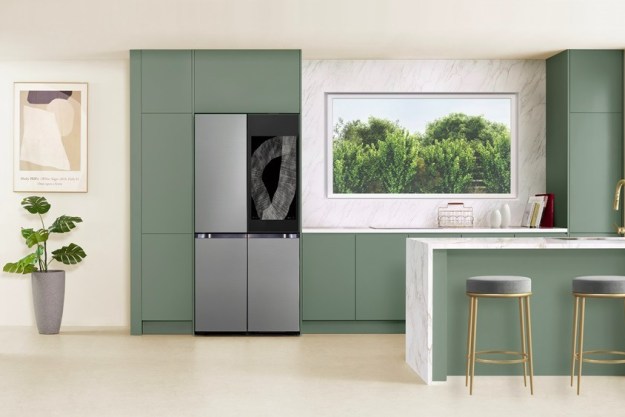In old movies, kids who slouched got perked back up with a sharp crack of a ruler or a book slapped on the edge of the desk. Most of us never saw such drama, but we’ve probably all heard our parents implore us to sit up straight and warn that slouching would lead us to becoming slovenly hunchbacks with few job prospects aside from ringing a church bell.
While posture makes us all look better, good posture also has positive effects on the body. It keeps muscles from becoming strained and can help you avoid pain, tension, and future health problems. But most of us can’t see ourselves slouching, so aside from getting book-slapped, how can we improve our posture?
There are any number of contraptions, belts, and straps that purport to help hold you more correctly upright, but since we here at Digital Trends are all about the technology, we’ll focus on the smarter, more connected options, and answer the key question: Do smart posture-correcting devices work?

What is a smart posture-correcting device?
In short, a smart posture-correcting device is worn on the body, monitors your posture using a small sensor, and will alert you if you lean or slouch. They’re usually adjustable and can be calibrated to your own baseline so there’s no penalty if you already have a bit of a basic lean. The biggest name in this technology is Upright, which makes Upright Go and Upright Go S. These small, thumb-sized pods promise better posture through technology.
How does a smart posture-correcting device work?
Smart posture-correcting devices, like Upright Go, contain tiny movement sensors and are worn on the back, either applied directly to the skin with a gentle removable adhesive, or on a lanyard that hangs down your back. For the most part, Upright is pretty discrete. If you didn’t want to attract attention, don’t worry; you can’t see the device under clothes.
Upright is calibrated using a companion app. The sensors in the device create a baseline for you and your unique posture, then you can set it to alert you when you lean too far forward, hunch, or slouch. The alerts come in the form of gentle on-device vibrations that are simply a reminder to sit up straight — no shocking rulers here!
To further gamify the experience, Upright gives you a score and tracks your progress daily to see how your posture is improving.
So … does a smart posture-correcting device really work?
I had a chance to try out one of Upright’s devices, including reviewing the Upright Go S recently. At first I was skeptical, mainly because I thought my posture was already pretty great. But after one too many days wrapping a long stint at the desk with a sore neck and tender back, I decided maybe a little coaching was in order.

To my surprise, the Upright app showed that during my first days with an Upright device I was slouching a lot more than I thought I did. I got plenty of vibrations and alerts that I was being lazy and hunching — to the point I had to take the device off for a break!
The next days were better. I adjusted my “slouch zone” so that I didn’t have to be 100% posture perfect. It’s possible to have the device be strict or a little more forgiving on you, and you can dial up the intensity as you improve.
Determined to beat my abysmal “high score,” I spent the next days doing my best Audrey Hepburn impression and improved my results. The other thing I noticed was that different muscles in my back were getting sore, but they were the ones I should be using, in truth, so I knew something was changing for the better.
After a few days I had made definite improvements and had my Upright scores in the app to prove it. But the big improvement was an awareness of how I sit on a regular basis, and of the ergonomics of my desk. So did a smart posture trainer work for me? It sure did.
I decided to make some changes: I bought a rocking footrest, a fabulous monitor arm to lift my screen, and a cushion to soften the hard chair I’ve been sitting on. I’m also a huge advocate for a wireless vertical mouse, which, after I got over the first day of use, has eliminated any rumblings of carpal tunnel syndrome for me.
The truth: I’m not wearing my Upright Go S every day any more. I don’t need to, since I feel like it trained me to know my ideal desk posture. I will put it on again in a few months to do a check-in on my posture and make sure those good habits I developed stick with me.
Editors' Recommendations
- Yale’s newest smart lock is designed for renters
- The Skylight Cal Max is a 27-inch smart calendar that might replace your smart display
- Pawport brings security (and smarts) to your existing pet door
- Samsung Ballie is a rolling smart home hub with a built-in projector
- Kohler reveals luxurious smart home products that turn your bathroom into a spa





